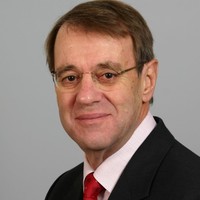 |
||
Websites: www.hoofdhalskanker.info; www.franshilgers.nl
Recent Advances in Dysphagia Research in Head and Neck Cancer Dysphagia is a significant complication in patients treated with (chemo)-radiotherapy (C)RT) for advanced head and neck cancer (HNC). It not-seldom increases in severity over time due to progressive fibrosis and/or non-use atrophy of the swallowing musculature. Since dysphagia has a devastating impact on physical and emotional wellbeing, targeted, evidence-based dysphagia management is in high demand. The effectiveness of preventive swallow and non-swallow exercises reducing non-use atrophy, and incidence/severity of dysphagia after CRT is increasingly recognized. Several interventions are applicable, varying from compensatory techniques to rehabilitative muscle strengthening exercises. These exercises should be based on the principles ‘specificity, individuality, and overload’ of strength training in sports medicine. To maximize improvements over time, application of progressive muscle overload during exercising is essential. The recently developed Swallowing Exercise Aid (SEA) enables both swallow and non-swallow exercises and allows adaptation to individual patient’s capacity, i.e. for progressive overload during training. It also provides adequate tactile and visual feedback about exercise and resistance levels. Effectiveness and feasibility of the SEA have been demonstrated in two prospective 6-weeks studies, showing good compliance and significant increase of swallowing muscle strength. Lipofilling as a novel method to lessen dysphagia due to tissue volume loss also will be addressed.
The Physiological and Clinical Rationale of Postlaryngectomy Pulmonary Rehabilitation Total laryngectomy (TL) has a profound impact on pulmonary physiology because of the short-circuiting of the upper respiratory tract. Inhalation of unconditioned air through the stoma directly into the lower-airways leads to excessive mucus production, involuntary coughing, and frequent forced expectoration to clear the trachea of mucus. These respiratory complaints negatively impact postlaryngectomy voice, and quality of life. Fortunately, these disadvantages of TL are preventable and/or treatable with heat and moisture exchangers (HMEs). Numerous clinical studies have shown that HMEs significantly decrease the aforementioned complaints, while the reduction of these complaints also results in a decrease of tracheobronchitis, and improvements in voice quality, pulmonary function, and quality of life. More recent studies have unraveled many basic physiological air-conditioning, airflow-resistance, and muco-ciliary aspects of HMEs, e.g. showing there is a highly significant increase in airway humidity, and reduced ciliated cell loss. There appears to be a wide variation in humidifying capacities of the presently available HMEs and the presence of hygroscopic salts (mostly CaCl2) seems indispensable for optimal water retention and exchange. All this research underlines the rational that HMEs are indispensable medical devices for optimal postlaryngectomy rehabilitation compensating for the ‘lost’ upper-airway functions, recognized through an increasing HME reimbursement worldwide.
|
